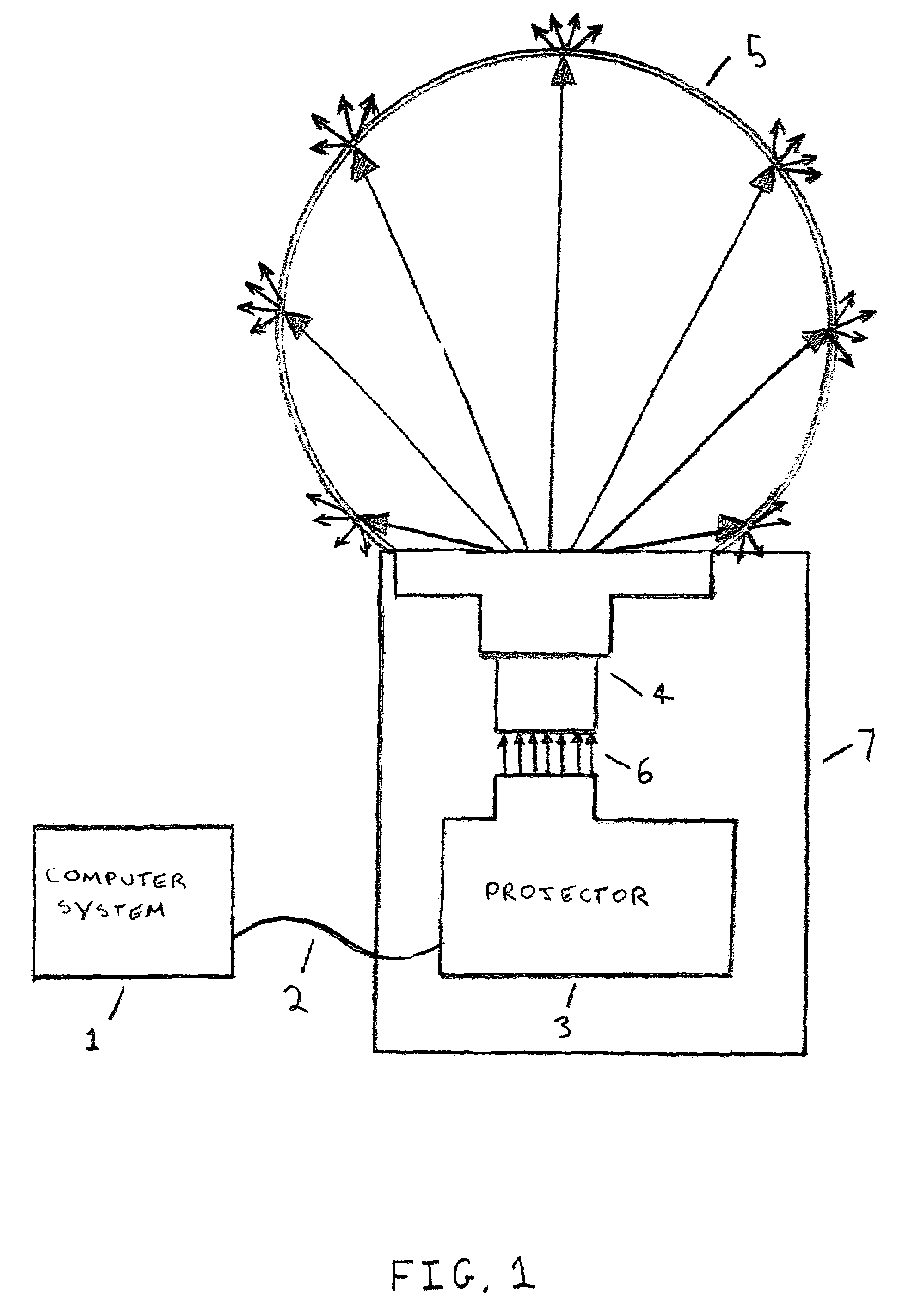Display system having a three-dimensional convex display surface
a display system and convex display technology, applied in the field of projection display systems, can solve the problems of high manufacturing cost, easy detection of seams, and high manufacturing cost of systems, and achieve the effects of reducing production costs, reducing production costs, and increasing production costs
- Summary
- Abstract
- Description
- Claims
- Application Information
AI Technical Summary
Benefits of technology
Problems solved by technology
Method used
Image
Examples
Embodiment Construction
[0030]FIG. 1 is a cross sectional view of an example display system according to the invention. It includes a display surface 5 that has a three-dimensional convex shape, and a projection system 7. The projection system projects an object field onto a continuous image field that has the same shape as the display surface 5, thus forming a displayed image.
[0031]The example of FIG. 1 also includes a computer system 1 that is connected to the projection system 7 by a computer video cable 2. The projection system 7 includes a projector 3 (in this case, a digital video projector) and a lens system 4. A video output port of the computer system 1 is connected by cable 2 to the digital video projector 3. The digital video projector 3 takes as input a video signal from the computer system 1 and displays the video signal onto an electronically controlled display, for example a liquid crystal display. In the absence of the rest of the system, the optics in the projector 3 would project the flat...
PUM
 Login to View More
Login to View More Abstract
Description
Claims
Application Information
 Login to View More
Login to View More - R&D
- Intellectual Property
- Life Sciences
- Materials
- Tech Scout
- Unparalleled Data Quality
- Higher Quality Content
- 60% Fewer Hallucinations
Browse by: Latest US Patents, China's latest patents, Technical Efficacy Thesaurus, Application Domain, Technology Topic, Popular Technical Reports.
© 2025 PatSnap. All rights reserved.Legal|Privacy policy|Modern Slavery Act Transparency Statement|Sitemap|About US| Contact US: help@patsnap.com



